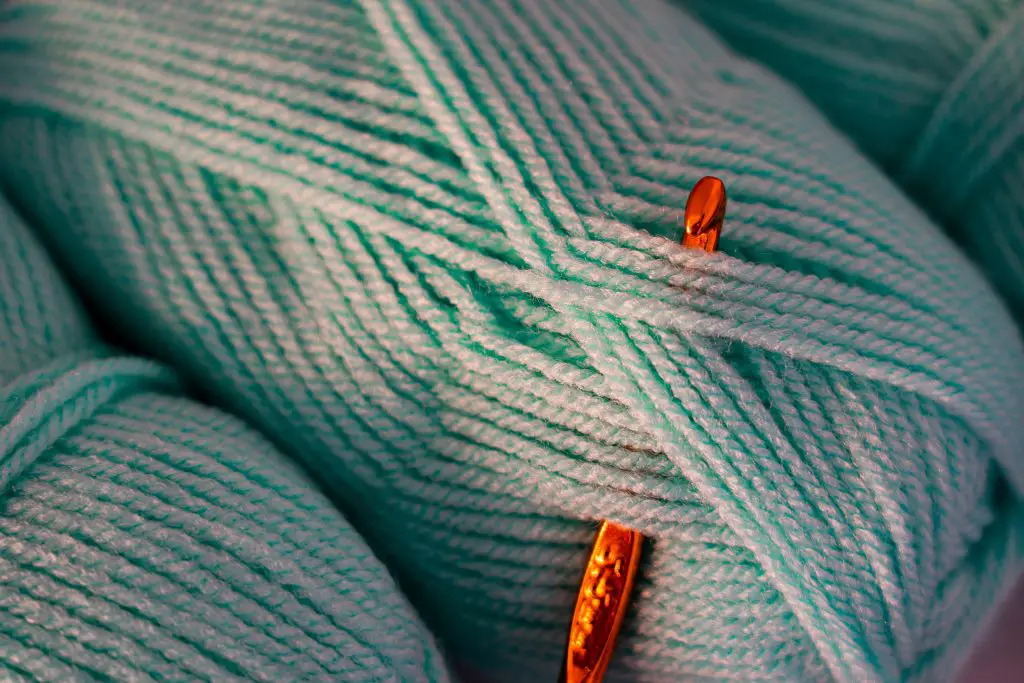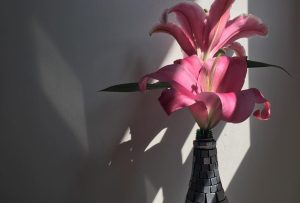Knitting requires so much more than a needle and a pair of hands. That yarn, though; it’s what really matters. Not only is it the difference between a stunning creation and something best left in the back of the closet, but it can also determine the cost, look, feel, and quality of your project.
It can be overwhelming to choose the right one for your project, with so many yarn options out there. But, this guide is here to provide you with all the details you need to make an informed decision. You’ll get to know the different weights, textures, fibre content, and pros and cons of the various yarns on the market, making sure you are well-equipped for your project.
Whether you’re a beginner or an experienced knitter, this guide will help you choose the best yarn for knitting your next masterpiece!

Contents
- 1 Best yarn for Knitting
- 1.1 Spun and Filament Yarns
- 1.2 Single-ply and Multi-ply Yarns
- 1.3 Monofilament and Multi-Filament Yarns
- 1.4 Flat and Textured Multifilament Yarns
- 1.5 Zero-twist to High Twist Yarn
- 1.6 Ring and Open-End Yarns
- 1.7 Novelty Yarn
- 1.8 Bouclé Yarn
- 1.9 Chenille Yarn
- 1.10 Slub Yarn
- 1.11 Flock/Flake Yarn
- 1.12 Nub, Knot, or Spot Yarn
- 2 Summary
Best yarn for Knitting
Spun and Filament Yarns
Yarns can be broadly categorized into two main types — spun yarn and filament yarn, based on the fibre structure and manufacturing process.
Spun yarn is made by twisting together short, discrete fibres of cotton, wool, or other materials. These fibres are carded, or combed, to align them in a parallel manner, and then spun together to form a cohesive strand of yarn. The fibres in a spun yarn can be of varying lengths, which gives the yarn a textured, irregular appearance.
The spun yarns are often used in making textiles for clothing, home furnishings, and other applications where a soft and natural look and feel are desired. When knitters think of the best yarn for knitting, spurn yarn is likely the first thing that comes to their mind.
Filament yarn, on the other hand, is made by extruding long, continuous fibres of materials such as polypropylene or nylon. These fibres are drawn out into thin filaments and then twisted or spun together to form a strand of yarn. Since the fibres in filament yarn are long and continuous, the resulting yarn has a smooth, lustrous appearance and is generally stronger and more durable than spun yarn.
Filament yarns are commonly used in applications where strength and durability are important, such as in industrial fabrics, ropes, and other heavy-duty applications.
Filament yarn is often considered the best yarn for knitting scarves and blankets because it is made of continuous strands of synthetic fibres, such as polyester or nylon. These strands are spun together to create a single, strong yarn that is smooth, soft, and easy to work with.
The main differences between spun yarn and filament yarn are in the appearance, structure, and performance of the yarns. Spun yarn is made from short, discrete fibres and has a textured, irregular appearance, while filament yarn is made from long, continuous fibres and has a smooth, lustrous appearance.
These differences in structure also affect the performance of the yarns, with the spun yarn being softer and more pliable, while filament yarn is stronger and more durable.
Single-ply and Multi-ply Yarns
Single-ply yarns are spun from a single strand of fibres twisted together. They are considered as the best yarn for knitting lightweight pieces where a delicate texture or drape is desired. Single-ply yarns are typically softer and more pliable than multi-ply yarns, but they can also be weaker and more prone to breaking.
Single-ply yarn is the best yarn for knitting accessories like hats, scarves, and cowls. The soft, fluffy texture of single-ply yarn creates a warm, cozy fabric that is perfect for keeping out the cold.
Also, it can be used to create beautiful home items like blankets, pillows, and rugs. The soft, plush texture of single-ply yarn creates a luxurious feel that is perfect for snuggling up on the couch or adding a touch of comfort to your living space.
Multi-ply yarns, on the other hand, are made by twisting together two or more strands of single-ply yarns. This creates a thicker, stronger yarn that is better suited for heavy-duty projects or fabrics that require more structure and durability. Multi-ply yarns can also have different textures and patterns, depending on the number and arrangement of the plies.
Multi-ply yarn is the best yarn for knitting sweaters. Boasting strength, durability and a smooth, uniform texture, this yarn will keep your sweater looking neat and polished — no matter how often it’s worn. It’s the perfect choice for creating a beautiful wardrobe staple, a knitting essential that will also keep you cozy and chic.
It is also great for knitting socks. It is the best yarn for knitting your favourite pair of socks as it has a smooth texture, that helps prevent friction and blisters.

Monofilament and Multi-Filament Yarns
Filament yarns can be classified into two types — monofilament and multi-filament yarns. Monofilament yarns consist of a single filament fibre, while multi-filament yarns are made up of two or more filament strands that have been plied or twisted together.
Monofilament yarns are generally smooth, lustrous, and have a high tensile strength. They are commonly used in applications where strength, durability, and a smooth texture are required. They are the best yarn for knitting fishing lines, surgical sutures, and industrial fabrics.
Multi-filament yarns, on the other hand, are more flexible and have a larger covering power at the same linear density compared to monofilament yarns. The plied strands provide added strength, and the twisted construction makes the yarns more resistant to abrasion and stretching.
Multi-filament yarns are commonly used in applications where flexibility and coverage are important. They are considered the best yarn for knitting clothes, upholstery, and carpeting products.
Flat and Textured Multifilament Yarns
Multifilament yarns are yarns made up of multiple filaments or fibres that are twisted or woven together. There are two main types of multifilament yarns: flat yarns and textured yarns.
Flat yarns are made up of filaments that are laid parallel to each other and then twisted together. This creates a yarn with a smooth, flat texture that is often used in the production of textiles, such as clothing and linens. Flat yarns can be made from a variety of fibres, including polyester, nylon, and silk.
Textured yarns are made up of filaments that are twisted and crimped to create a yarn with a more irregular, textured surface. The crimping process can be achieved through a variety of methods, including heating, twisting, or compressing the yarn. Textured yarns can be made from a variety of fibres, including polyester, nylon, and wool.
Both flat and textured multifilament yarns have their own unique properties and are used in a variety of applications in the textile industry. The choice of yarn type will depend on the specific needs and desired characteristics of the textile being produced.

Zero-twist to High Twist Yarn
Zero-twist to high-twist yarn refers to a range of yarns that vary in their twist level. The amount of twists in a yarn is determined by the number of times the fibres or filaments are twisted together per unit length. The zero-twist yarn has no twist, while high-twist yarn has a large number of twists per unit length.
Zero-twist yarn is the best yarn for knitting projects that require a soft and fluffy texture, such as baby blankets, bath towels, and plush toys. However, it is not ideal for knitting projects that require structure or stitch definition, as the lack of twist can result in a loose, unstable fabric. While the high-twist yarn is the best yarn for knitting durable rugs, bags, and upholstery.
Ring and Open-End Yarns
Ring yarn and open-end yarn are two methods of spinning yarn from fibres. The main difference between these two methods is the way in which the fibres are twisted together to form the yarn.
Ring yarn is made by twisting fibres together using a ring-spinning machine. This machine draws out the fibres and twists them together to create a strong, smooth yarn. Ring-spun yarn is typically more expensive to produce than open-end yarn but is considered to be of higher quality. Ring-spun yarn is known for being the best yarn for knitting clothes, home textiles, and industrial textiles.
Open-end yarn is made by spinning fibres together using an open-end spinning machine. This machine uses a rotor to draw out the fibres and twist them together, creating a yarn with a somewhat rougher texture than ring-spun yarn. Open-end yarn is less expensive to produce than ring-spun yarn, but it is not as strong and durable. Open-end yarn is considered the best yarn for knitting t-shirts, denim, and towels.

Novelty Yarn
Novelty yarn refers to a range of yarns that incorporate unusual fibres or textures into the yarn, such as feathers, ribbons, or metallic threads. The novelty element in the yarn creates a unique texture and appearance that can add interest and dimension to your project. Novelty yarns are the best yarn for knitting scarves, hats, and garments, as well as for decorative items like wall hangings and pillows.
Bouclé Yarn
Bouclé yarn is a type of yarn that features small loops or curls along its length, giving it a bumpy, textured appearance. This is achieved by creating loops in the yarn during the spinning process and then securing them in place with a second strand of yarn. Bouclé yarn can be made from a variety of fibres, including wool, cotton, and synthetic fibres. It is often considered the best yarn for knitting blankets, scarves, and jackets.
Chenille Yarn
Chenille yarn is a type of yarn that is made up of short lengths of yarn, called piles, that are twisted together to create a velvety, plush texture. Chenille yarn is usually made from cotton, but can also be made from synthetic fibres like polyester. While, it is often the best yarn for knitting soft, cozy blankets, pillows, and stuffed animals.
Slub Yarn
Slub yarn is a type of yarn that features thick and thin sections along its length, giving it a textured, irregular appearance. The thick sections are created by adding extra fibre to the yarn, and the thin sections are created by reducing the amount of fibre used. Slub yarn is often made from cotton, linen, or silk, and is the best yarn for knitting garments, home decor items, and accessories.
Flock/Flake Yarn
Flock/flake yarn is a type of yarn that features small fibres or particles (called “flock” or “flakes”) that are attached to the yarn base. These fibres can be made of a variety of materials, including cotton, wool, or synthetic fibres. The flock/flake fibres create a fuzzy or textured appearance and which makes it the best yarn for knitting scarves, shawls, and bags.
Nub, Knot, or Spot Yarn
Nub, knot, or spot yarn is a type of yarn that features small, raised sections along its length. These sections are created by adding extra fibre or twisting the yarn in a specific way to create a raised bump or knot. Nub, knot, or spot yarn is often used for creating texture in knitted or crocheted fabrics and so deemed the best yarn for knitting sweaters, hats, and blankets.
Summary
To summarize, it can be confusing and challenging to find the perfect yarn for your projects. Whether you’re a beginner looking for an easy-to-use yarn or an experienced knitter searching for a luxurious, high-end yarn, there is a wide variety of options available.
But, you can unlock the secrets to stitching success, and discover the best yarn for knitting! With the right yarn, you can create knit pieces that are both beautiful and practical.
There are many varieties of yarn to choose from, each with its own unique properties. From the thick and cozy to the thin and delicate, there are countless options of yarn to choose from! But, by following our helpful information and tips, you’ll be able to find the perfect yarn for all your knitting needs! Good luck!






